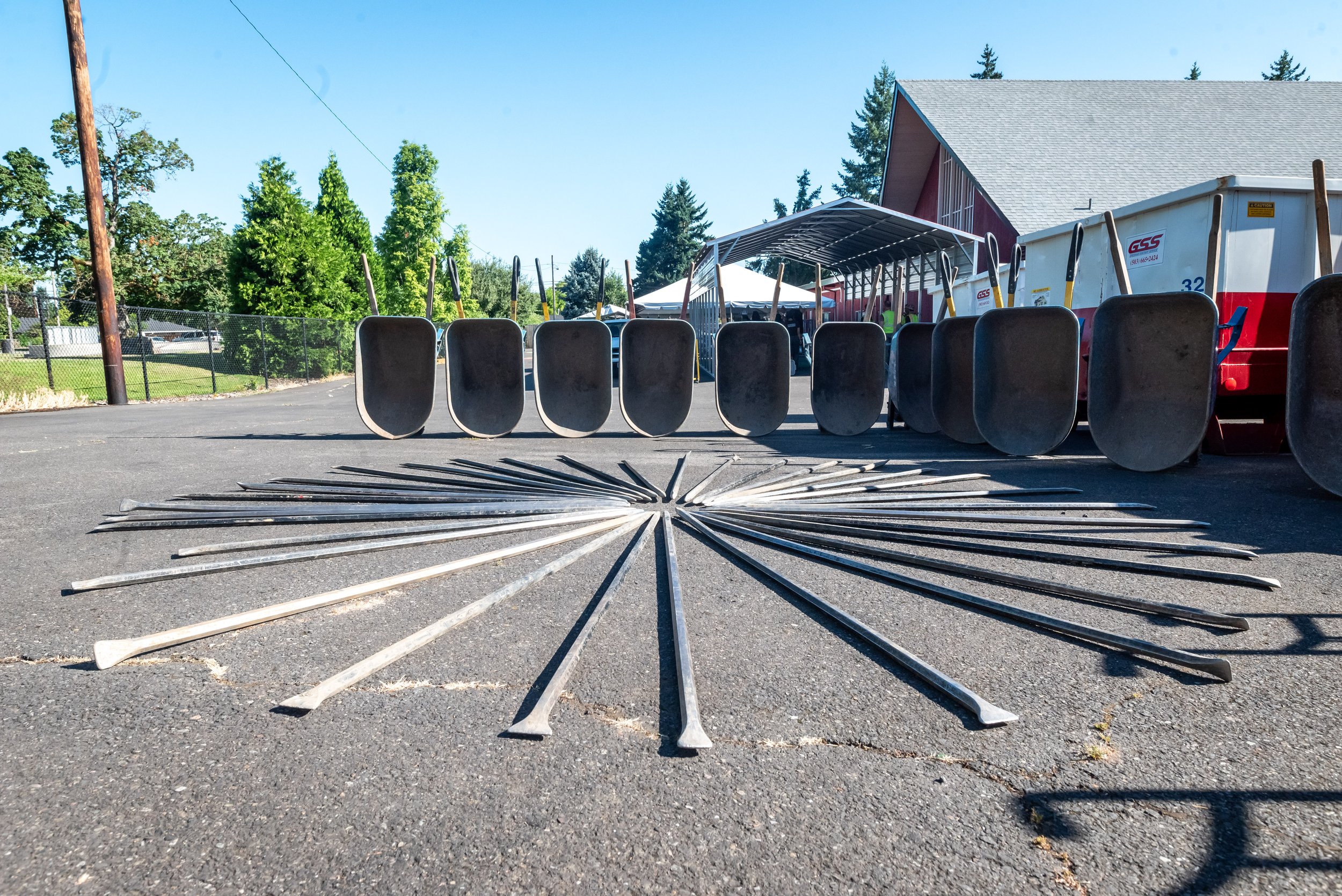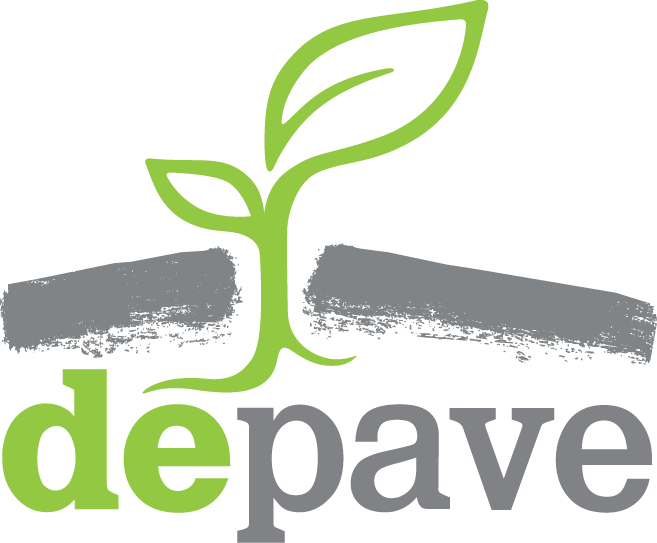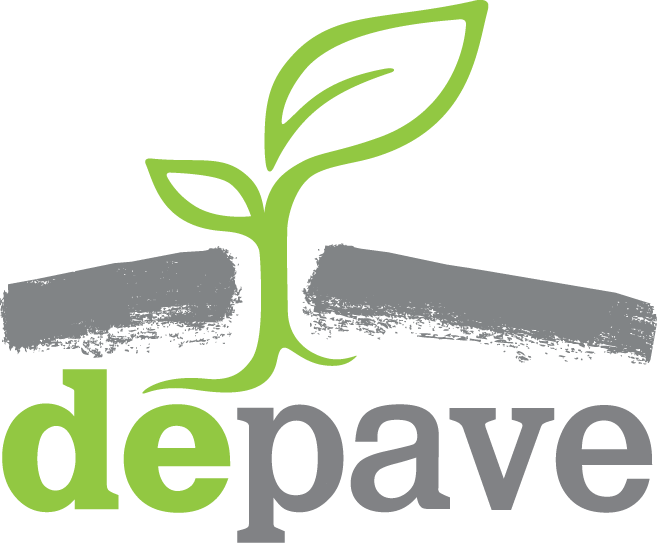
our impact
Impact Reports
2022 and 2023 brought a variety of exciting community projects to Depave. Read the Impact Report to learn more!
Soil carbon
Urban soils are hotspots for carbon sequestration but the mechanisms and patterns remain largely unknown and undescribed. Total carbon in urban soils is 1.5-3 times higher than non-urban soils and carbon accumulation occurs at deeper profiles, which results in urban soils having 3-5 times larger total carbon stocks. Soil organic carbon is significantly lower under impervious surfaces.
A typical Depave project removes pavement from and re-greens 3,600 square feet (SF) with trees, landscaping, and restored soils, sequestering an estimated 0.05-0.10 metric tons of soil carbon per year. For Depave’s whole portfolio (80 sites, 366,535 SF) we estimate that between 5.10 and 10.21 metric tons of carbon per year are sequestered in restored soils. Additional carbon sequestration benefits accrue from trees planted in depaved areas.
Urban runoff
Portland’s annual rainfall is 37 inches, so the removal of 1,000 square feet (sf) of pavement eliminates 22,000 gallons of stormwater runoff per year, redirecting it to the soil. A typical depave project footprint is 3,600 SF, but runoff from adjacent impervious areas may multiply the stormwater mitigation benefits of the project. The area of adjacent impervious surfaces from rooftops and surrounding pavement that run off to Depave project footprints varies widely and ranges from 0-203,000 SF per project, with a median of 4,200 SF.
Altogether a typical project (3,600 SF of pavement removal and 4,200 SF of runoff redirected from adjacent impervious surfaces) reclaims and re-purposes 208,872 gallons of stormwater runoff per year. Across the whole of Depave’s project portfolio (80 projects over the period 2008-2023, 8.4 acres of pavement removed plus 12.6 acres of adjacent impervious areas running off to our project areas), we estimate that 24.4 million gallons of stormwater runoff is redirected each year into on-site soils.
Urban heat
Recent NASA studies demonstrated the significance of Depave’s efforts in mitigating urban heat on a local scale. Their recent case study revealed that Depave’s impact on urban heat is observable and quantifiable using remote-sensing data and geospatial tools. Across six sites, NASA measured decreases of up to 7.7-degree Fahrenheit in reflected heat from Depave’s urban greening treatments. As these greenspaces grow out and mature, NASA hypothesized that the cooling effects of vegetation will increase. The NASA analysis provides quantitative measures for the site-specific urban heat mitigation benefits of Depave’s work.
2021 brought unprecedented challenges due to the ongoing pandemic limiting our ability to bring volunteers to public schools for most of the year. Projects were delayed, but we were also given time to pause and refocus. We strengthened our commitment to anti-racism and workforce development and leaned into new possibilities of equity and environmental justice.
2019 brought many new & exciting endeavors for Depave. We invited new leadership, delved into new types of projects, and re-imagined what equity in the built environment can achieve.
Depave’s tenth year in action brought new transformations in new terrain. We also completed several high-impact projects in familiar areas.






